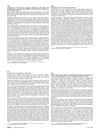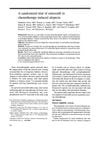Assessing Low-Dose Oral Minoxidil Efficacy in Androgenetic Alopecia: A Comparative Study of AGA and AGA Unmasked by Telogen Effluvium
August 2024
in “
Archives of Dermatological Research
”

TLDR Low-dose oral minoxidil is effective and safe for treating androgenetic alopecia.
This study evaluates the efficacy and safety of low-dose oral minoxidil (LDOM) in treating androgenetic alopecia (AGA) and AGA unmasked by telogen effluvium. The findings demonstrate that LDOM is both effective and safe for patients in both groups, with comparable results. This supports the use of LDOM as a reliable treatment option for AGA, potentially enhancing patient outcomes and quality of life.







